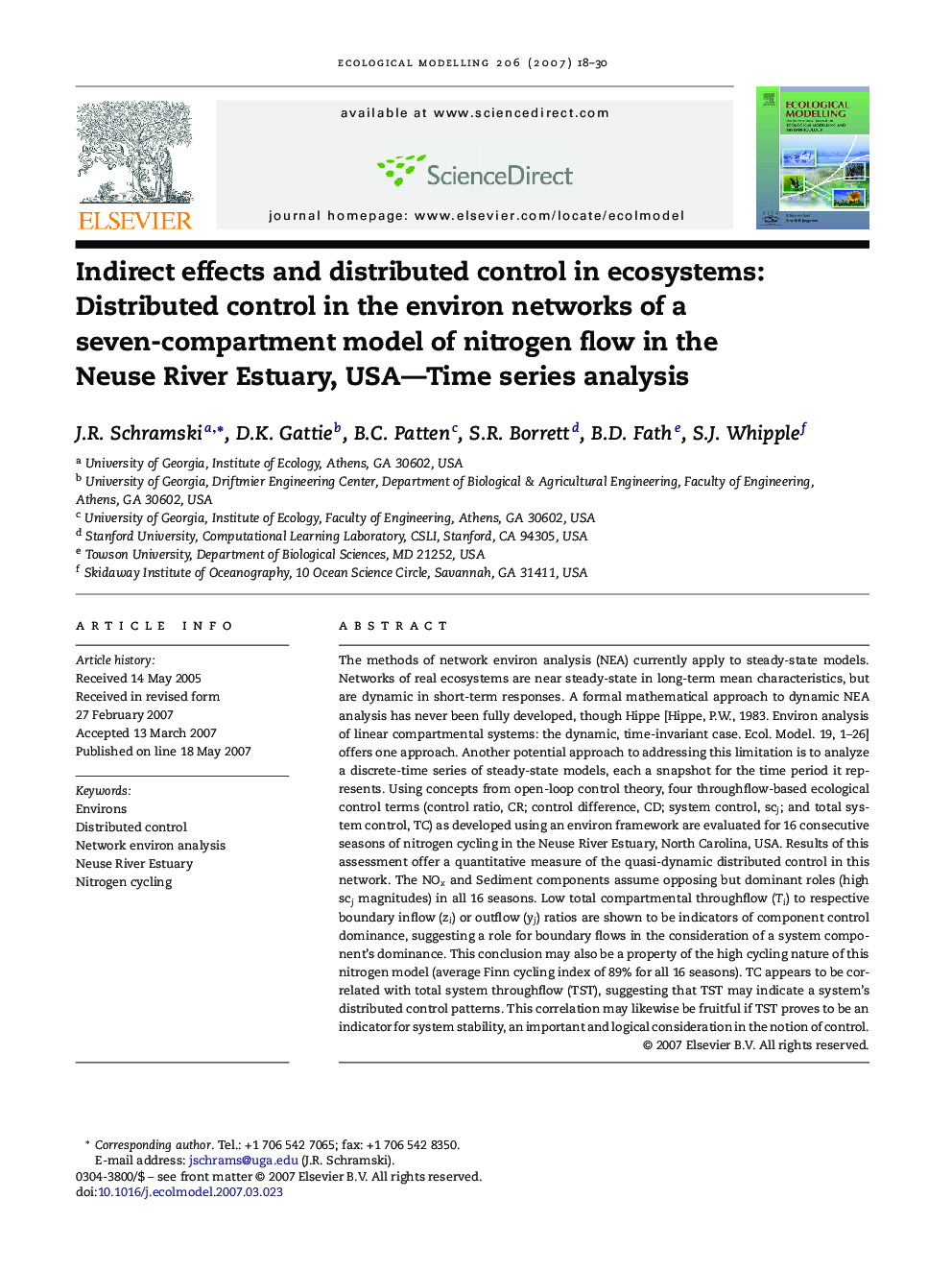| کد مقاله | کد نشریه | سال انتشار | مقاله انگلیسی | نسخه تمام متن |
|---|---|---|---|---|
| 4378709 | 1617545 | 2007 | 13 صفحه PDF | دانلود رایگان |

The methods of network environ analysis (NEA) currently apply to steady-state models. Networks of real ecosystems are near steady-state in long-term mean characteristics, but are dynamic in short-term responses. A formal mathematical approach to dynamic NEA analysis has never been fully developed, though Hippe [Hippe, P.W., 1983. Environ analysis of linear compartmental systems: the dynamic, time-invariant case. Ecol. Model. 19, 1–26] offers one approach. Another potential approach to addressing this limitation is to analyze a discrete-time series of steady-state models, each a snapshot for the time period it represents. Using concepts from open-loop control theory, four throughflow-based ecological control terms (control ratio, CR; control difference, CD; system control, scj; and total system control, TC) as developed using an environ framework are evaluated for 16 consecutive seasons of nitrogen cycling in the Neuse River Estuary, North Carolina, USA. Results of this assessment offer a quantitative measure of the quasi-dynamic distributed control in this network. The NOx and Sediment components assume opposing but dominant roles (high scj magnitudes) in all 16 seasons. Low total compartmental throughflow (Ti) to respective boundary inflow (zi) or outflow (yj) ratios are shown to be indicators of component control dominance, suggesting a role for boundary flows in the consideration of a system component's dominance. This conclusion may also be a property of the high cycling nature of this nitrogen model (average Finn cycling index of 89% for all 16 seasons). TC appears to be correlated with total system throughflow (TST), suggesting that TST may indicate a system's distributed control patterns. This correlation may likewise be fruitful if TST proves to be an indicator for system stability, an important and logical consideration in the notion of control.
Journal: Ecological Modelling - Volume 206, Issues 1–2, 10 August 2007, Pages 18–30